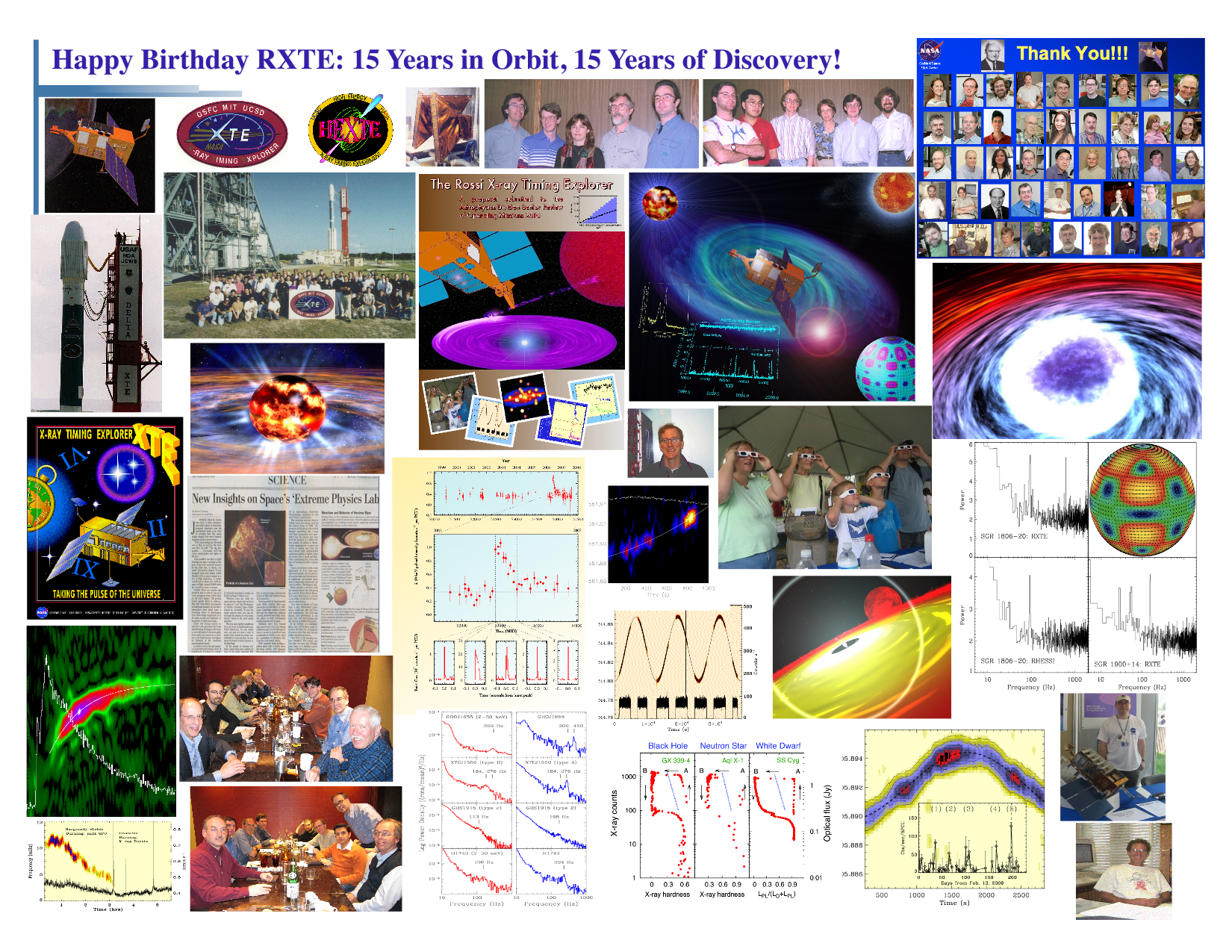
 Credit: RXTE Team; NASA
Credit: RXTE Team; NASA
Time Flies for RXTE
Fifteen years already? Hard to believe that the Rossi X-ray Timing Explorer (otherwise RXTE) was launched more than 15 years ago, on December 30, 1995. RXTE was designed to quickly observe transient sources and monitor variable sources (periodic and not) on timescales from microseconds to decades. RXTE has been wildly successful, and has many fundamental discoveries to its credit: the discovery of kilohertz quasi-periodic oscillations, which let astronomers probe the region of spacetime just above the surface of neutron stars; an X-ray "weather map"; a compact "missing link"; a mysterious periodic high-energy fading in a notorious extremely massive star; and evidence of the dragging of spacetime by a rotating massive body. The poster above was created in honor or RXTE's 15th birthday party and represents only some of the breakthrough science obtained by RXTE, along with some of the people who made it all possible. Rossi would be proud!
Published: May 2, 2011
<
HEA Dictionary ● Archive
● Search HEAPOW
● Other Languages
● HEAPOW on Facebook
● Download all Images
● Education ● HEAD
>

Each week the HEASARC
brings you new, exciting and beautiful images from X-ray and Gamma ray
astronomy. Check back each week and be sure to check out the HEAPOW archive!
Page Author: Dr. Michael F. Corcoran
Last modified Tuesday, 27-Feb-2024 10:15:21 EST


